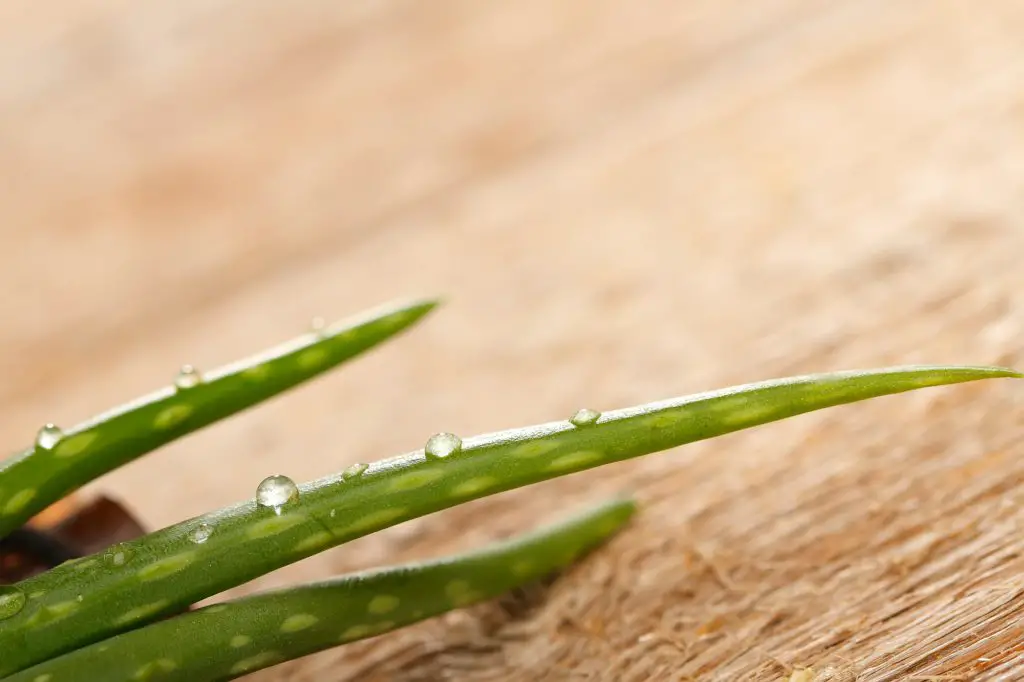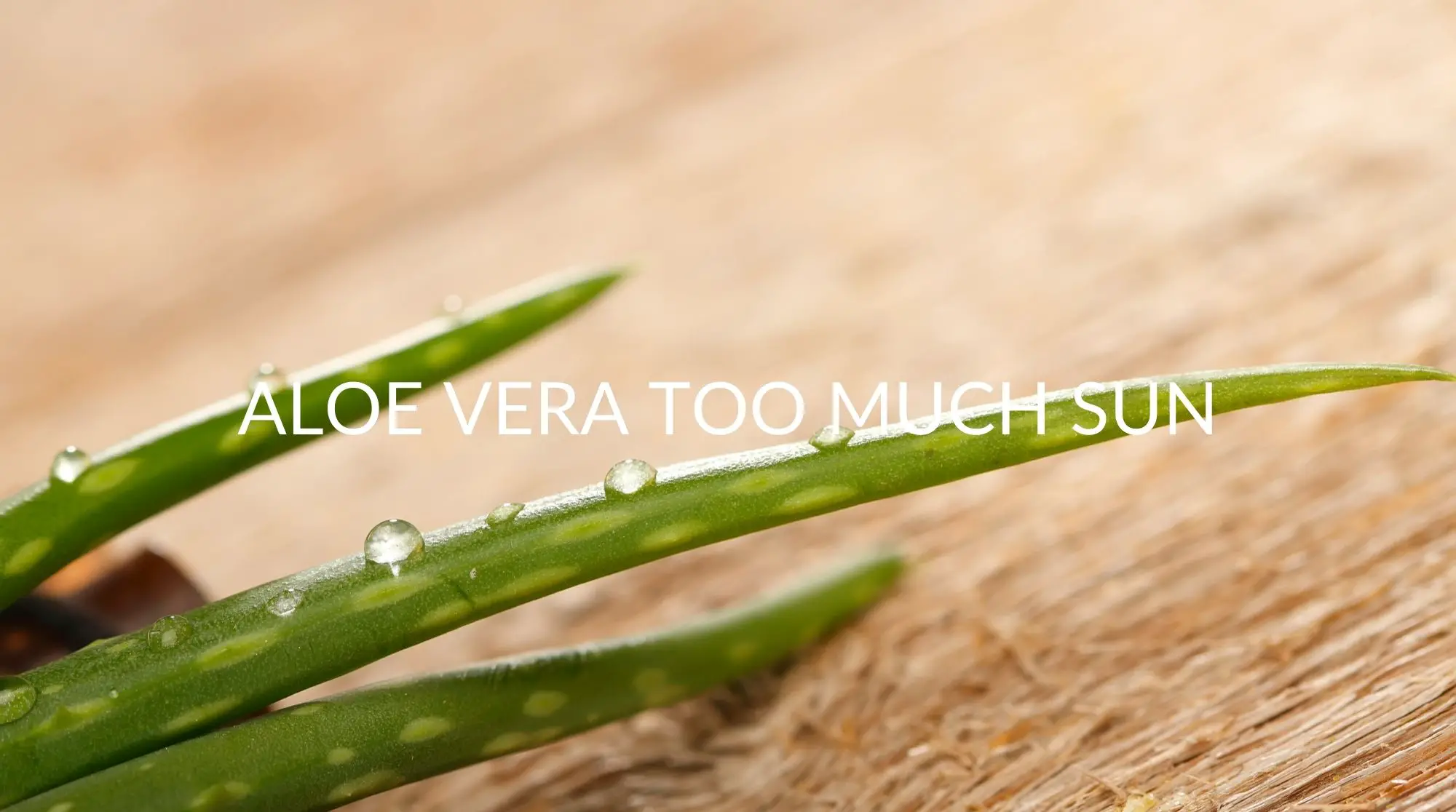Aloe vera plants can get too much sun if you place them in direct sunlight for too long. The most common sign that your aloe vera plant has received too much sun is browning, wilting, dry soil, or thinning leaves. Luckily, you can reverse the effects of sunburn by removing your aloe from direct sunlight and rehydrating it.
Most of the time, you will need to bring your plant indoors to recover from sunburn. Plants must avoid direct sunlight while recovering from sunburn and receive ample water as they rehydrate themselves and their soil. Keep your aloe vera plant somewhere shaded after reviving the plant to avoid future sunburns.
Can Aloe Vera Plants Get Too Much Sun?
Typically, an aloe vera plant will require consistent indirect sunlight to grow. However, too much sunlight can damage an aloe vera plant’s leaves. It is best to keep your aloe vera plant somewhere it can receive enough sunlight to flourish without getting sunburnt.
Since much of the aloe vera plant is mostly water, keeping it out of direct sunlight is essential. Indirect sunlight, like indoors away from the window, is best for the aloe vera plant. Keep your aloe vera plant indoors or under trees. These shaded places will keep them from drying out.
How Do I Know If My Aloe Is Getting Too Much Sun
Visible signs like wilting and browning are the most common ways to identify when your aloe vera plant is getting too much sun. As your plant is exposed to the sun for too long, it can get bleached and become discolored. When your aloe vera leaves discolor, they dry out. Browning is a physical sign you have placed your aloe vera plant in the sunlight for too long.
Discoloration
The discoloration of aloe vera leaves is one of the most common signs of an aloe vera plant getting too much sun. Leaf discoloration is the first indicator of sunburn, which occurs when your plant is experiencing too much direct sunlight. There are several types of discoloration, mostly leading to fading of the bright green color.
White Sunspots
White sunspots may appear in places on your leaves as a sign of sunburn. Even after reviving your plants from sunburn, white spots might remain on the leaves. These white spots on your aloe leaves must be cut off using gardening shears if they are dead.
Wilted Leaves
When your plant is wilted and water-deprived, this is a common sign your plant has gotten too much sun. The edges of your aloe vera plants will curl toward the middle and will begin to thin. Wilted leaves fall toward the ground and appear dead.
You can revive wilted leaves by watering your plant. However, if the leaves are dead, they should be sheared off so your plant does not waste its energy trying to feed the dying parts of the plant.
Dehydrated Soil
Dehydration is one way to tell if your aloe vera plant is getting too much sun. When soil is dehydrated, your plant might require more water than usual, or your soil might be physically dry, unlike its usual moistness. Too much sunlight will dry your plant’s soil, killing your aloe vera plant. Your soil might appear powdery or dry.
Curling Leaves
Curling leaves are a common sign of an aloe vera plant that has got too much sun. When aloe vera plants have received too much sun, they become dehydrated, weak, and curl at the edges. It is one of the most common physical symptoms of sunlight exposure because the hydrating plant is dying up on the inside.

Can An Aloe Plant Recover From Sunburn?
You can revive most aloe vera plants from sunburn if you use the proper methods, like rehydration and placing your plant indoors. Sometimes the sunspots can be irreversible, but they will require shearing for regrowth.
Do not be afraid of attempting to rehydrate your sunburnt plant. Even the most dehydrated aloe plants can be rehydrated if you try. Just because it appears dead does not mean you cannot try bringing your plant back to life. Wilted plants may appear like they are dying, but there are still many opportunities to save your plant.
How To Revive A Sunburnt Aloe
There are several ways to revive an aloe vera from sunburn. Bringing your plant indoors after sunburn will help them recover from the harsh light exposure. Your aloe vera plant might not regain its color from sitting indoors or in a shady area. However, moisture will return to your plant if you keep it indoors, out of direct sunlight. Once the moisture returns to your plant, the bright green color should return too.
Bring Your Plant Indoors
If your plant is sunburnt, you should bring it indoors. Bringing your plant indoors keeps it away from direct sunlight and allows it to refresh. Keeping your plant indoors nearly guarantees that your aloe vera plant will not experience sunburn (unless you keep it in a window).
Keeping your plant indoors does not help regain color. So, do not have the expectation that it will immediately return. Most sunspots are permanent, but you can cut them off with a pair of garden shears to help the leaves regrow.
Rehydrate Your Plant
Help your plant recover from sunburn by rehydrating its dry soil. Rehydration will help the plant soak up water and rehydrate its dried leaves. You should shower your aloe vera plant by thoroughly spraying its leaves. It can also help to put the aloe vera plant under a showerhead faucet to drench the soil and leaves in water. Ideally, soaking the aloe vera plant will rehydrate it enough that it is no longer sun-bleached.
Change Its Location
There’s no need to move your aloe vera plant indoors. Still, you should change its sunbathing location somewhere less direct to prevent further sunburn. You may also want to spray extra water onto your leaves in the following weeks to moisten them.
Cut off Dead Leaves
Some sun damage can be permanent to your aloe vera plant. If your leaf is dead, consider cutting it off, so your plant does not waste necessary nutrients hydrating it. Cutting the dried ends of your sunburnt aloe with a pair of garden shears helps living parts of the plant flourish. Remember to cut right below the dead part of the leaf so the leaf can regrow.
Replant Your Aloe Vera Plant
Sometimes replanting your aloe vera plant might be the best course of action if your plant receives too much sunlight throughout the day. Replanting can also be good if your soil cannot sustain your aloe vera plant. It allows your plant to spread its roots in new soil, where it is more likely to flourish if it is not in direct exposure to sunlight throughout its entire day.
How To Prevent Aloe Plant From Too Much Sun
There are plenty of tactics for avoiding sunburn. Prevent your plant from getting too much sun by placing them in shaded areas and keeping them out of direct sunlight. Consistently water your plant and trim the aloe vera leaves to avoid unnecessary nutrient distribution.
Visit your aloe plant daily to observe how much sunlight your plant receives. If it gets too much sunlight throughout the day, you may want to move it indoors or to a more shady area. The sun is continuously moving. If your plant is in an inadequate spot, it might receive too much sunlight during its day.
Place in Shaded Areas
Keep your aloe vera plant in shaded areas to prevent aloe vera plants from getting too much sun. Aloe vera plants require indirect sunlight, so placing them in a shady spot will give them plenty of light. Shaded areas should be covered throughout the day, receiving no direct sunlight. A great example of a shaded area would be a front porch or balcony. You may also place it somewhere that is covered, like on a bookshelf or underneath another plant.
Keep Your Plants Indoors
Keeping your plant indoors is an excellent way of preventing your aloe vera plant from getting too much sun. You can control the amount of sunlight your plant receives by placing it somewhere in your house where it can receive indirect sunlight. Keeping your plant indoors helps you keep a closer eye on your aloe plant. You are more likely to notice changes when you pass by your plant daily. It enables you to maintain a strict weekly watering routine.
Watch the Weather
If you keep your plant outdoors, watch the weather closely. Pay attention to how the weather impacts your plant, like rain or the amount of sunshine. Keeping your aloe vera plant outdoors on cloudy days is great because of the indirect sunlight your plant receives. On extra sunny days, you may want to move your plant indoors.
Watch the Time
Watching the time of day is a key way of keeping your plant from getting too much sunlight. If you want to keep your plant from getting too much light, move it around as the sun moves.
Plants that receive indirect sunlight during one time of day or year may get direct sunlight at another time. Move your plant throughout your yard or terrace throughout the changing seasons to accommodate the moving sun. It is essential to pay close attention to where you place your plant and monitor it by frequently visiting throughout your week. The moving sun can significantly impact your plant’s health.
Water Your Plants Sufficiently
Succulents do not require excessive water. However, your aloe vera plant should always have adequately hydrated soil. Anything too dry can cause severe sunburn, and soil too moist can cause root rot. Be sure to water your soil enough that it stays sufficiently hydrated. Remember, succulents need spritzing too. If your soil becomes too dry, give your plant a thorough soaking to rehydrate it.
Recap
Sunburn is a significant problem for aloe vera plants that can cause browning and dryness in your green aloe leaves. A ways keep an eye on your aloe vera plant for browning and signs of physical dryness.
If your aloe vera leaves look physically dry, move your plant somewhere less sunny to rehydrate it. Color should eventually return to your aloe vera leaves if you use suitable methods. If the color does not return, your aloe vera plant might be too sunburnt. A plant that does not change color after being brought indoors typically faces more severe problems than sun exposure.








